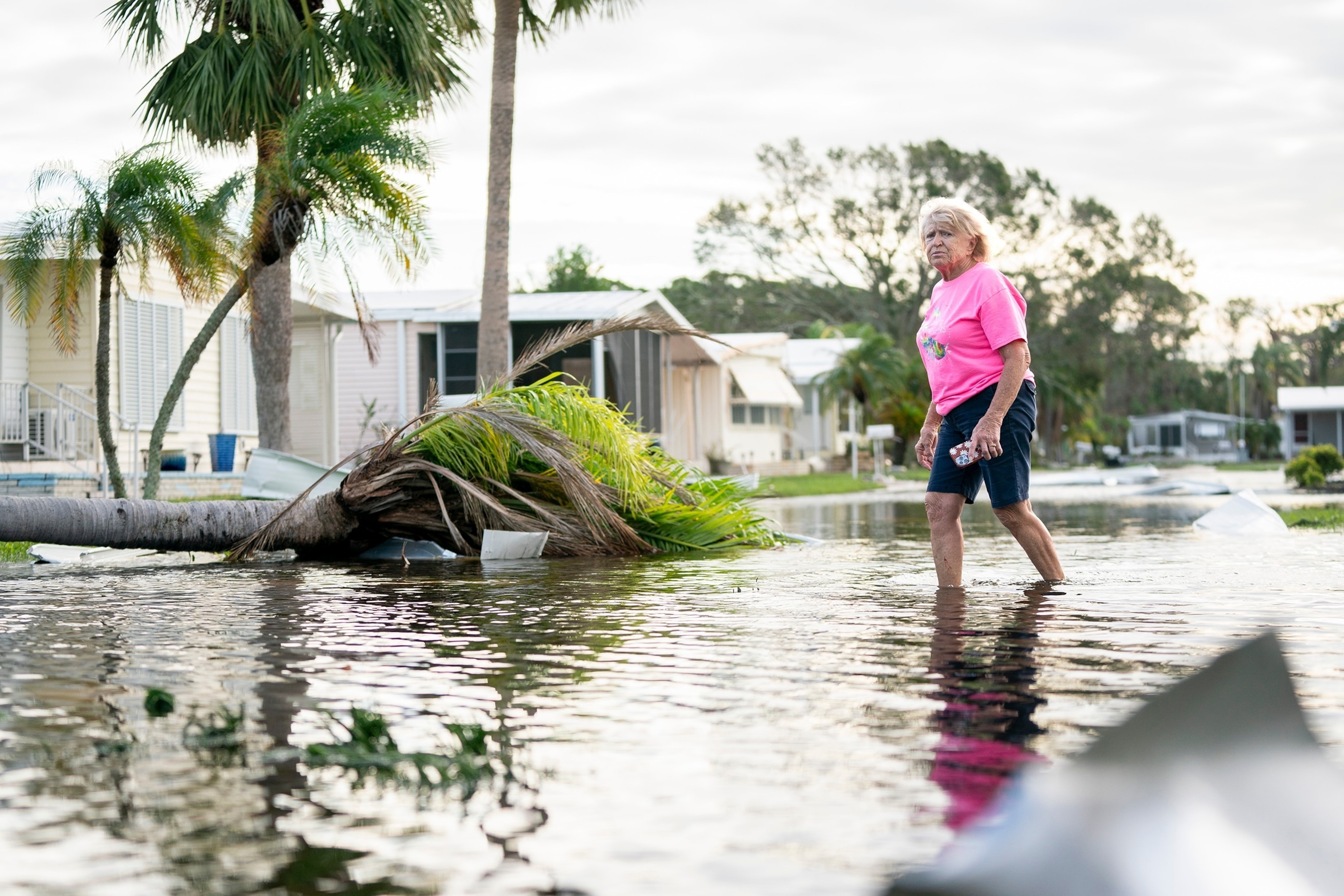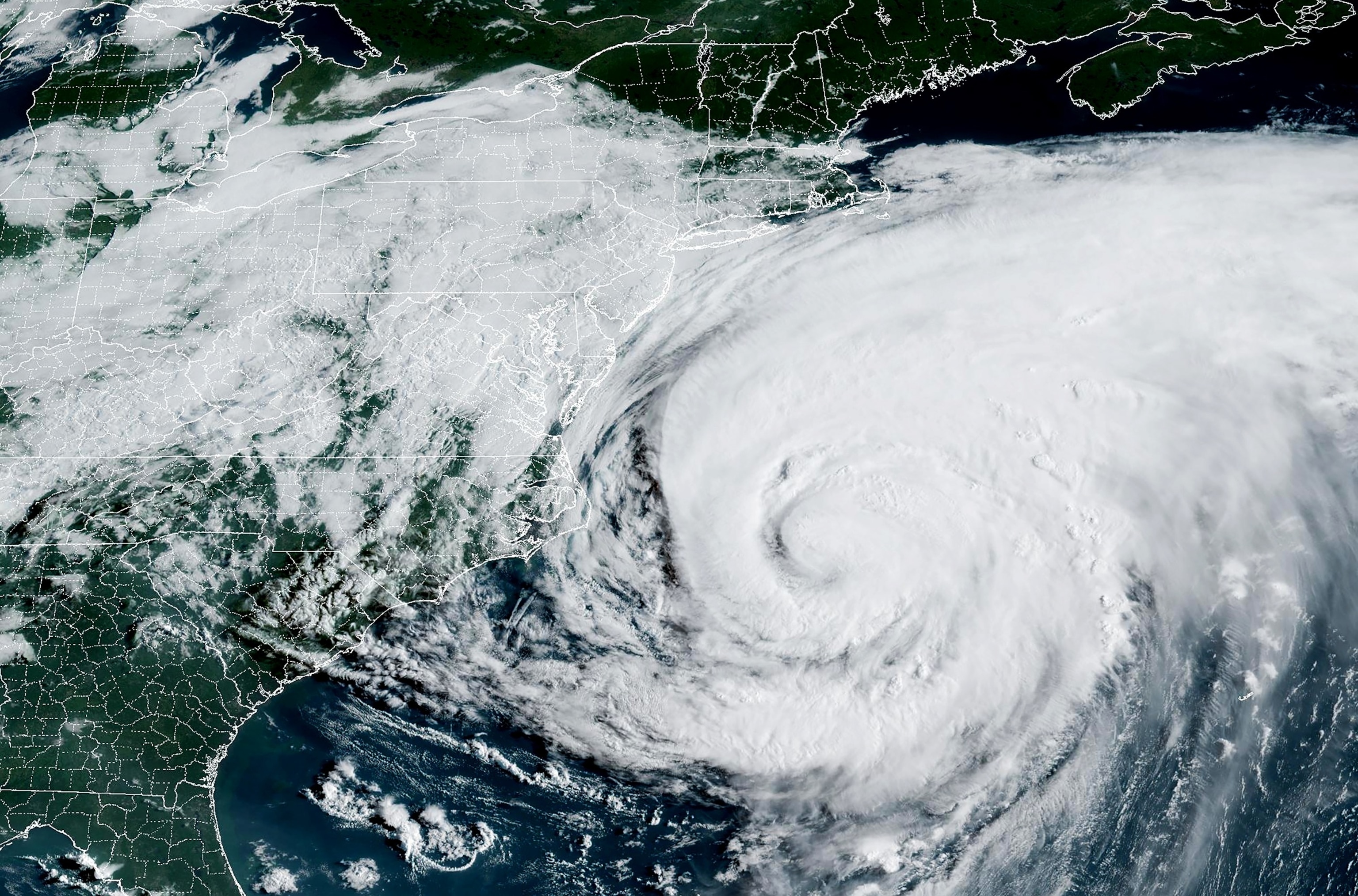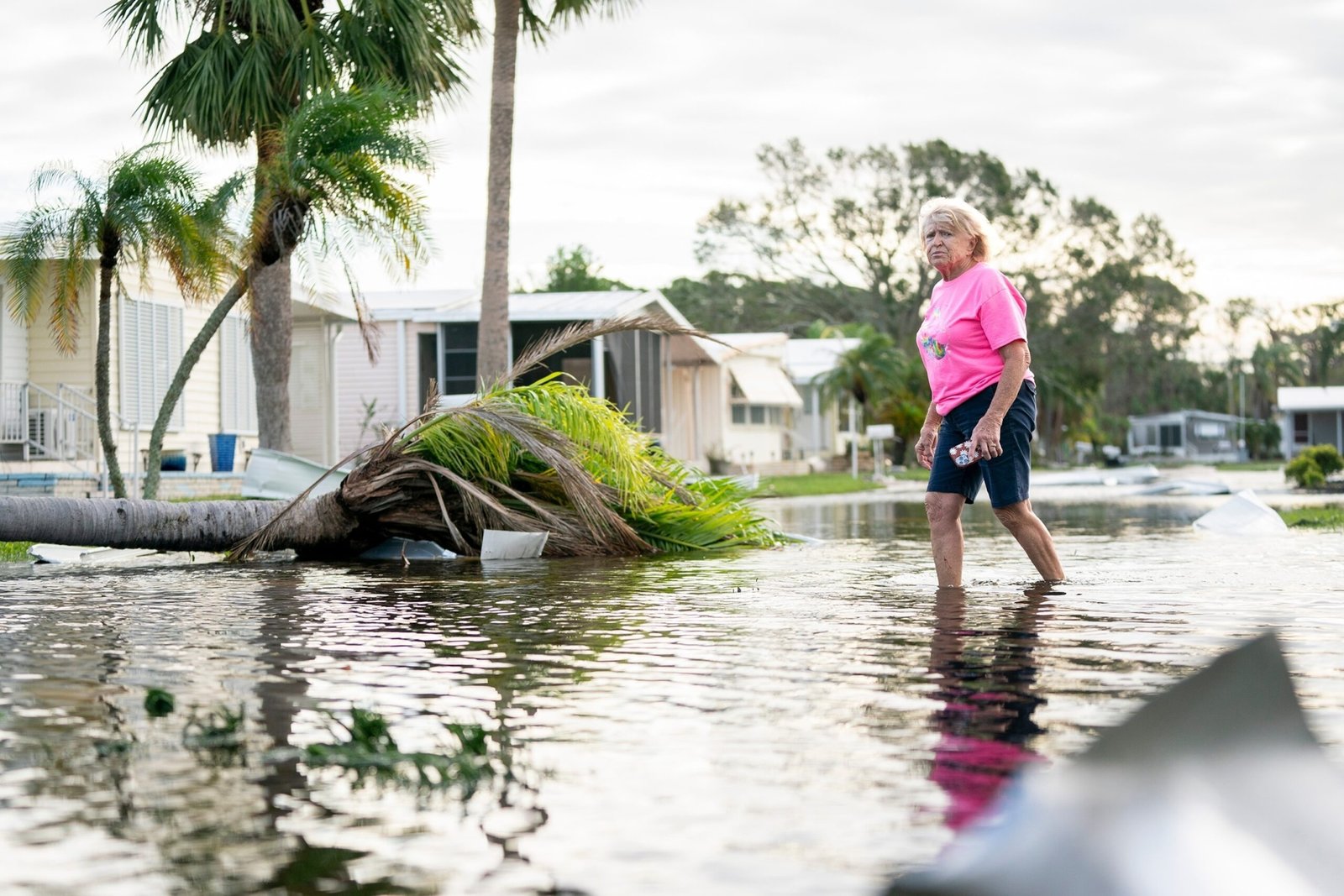Do not be fooled by the lack of tropical cyclones in the Atlantic basin.
The peak of the hurricane season is here, and the activity could soon increase, despite the relative tranquility that currently occurs in the tropics, according to meteorologists.
The climatological peak of the Atlantic Hurricanes season is September 10, and most of the activity occurs between mid -August and mid -October, on average, according to the National Hurricane Center. Historically, speaking, approximately two thirds of the entire activity of the Atlantic hurricane season occurs between August 20 and October 10.
But the Atlantic basin remains silent without a tropical development for next week.
“For the next seven days, things look quite quiet,” David Zierden, Florida state climatic and head of the Florida Climate Center at Florida State University, told ABC News.

A woman walks down a street flooded after Hurricane Milton on October 10, 2024 in Osprey, Florida.
Sean Rayford/Getty Images
However, forecasting anticipates an increase in activity during the second half of the month, since conditions become more favorable for the development of tropical cyclones.
The rest of September and October will probably be active, said Zierden.
The NOAA climate prediction center, the long -range global tropical risks perspective shows a growing probability of tropical development on the central Atlantic Ocean in the last part of September, as large -scale environmental conditions become more favorable for tropical cyclones activity.
Tropical climate experts in Colorado State University Echo these predictions, saying that the general atmospheric conditions, including wind patterns, will change so that it supports a notable increase in activity.
In mid -September, the upper atmosphere and wind shear should become more favorable for the formation and strengthening of storms, said Jennifer Francis, atmospheric scientist at the Woodwell Climate Research Center, ABC News.
Last month, NOAA predicted the activity above the normal for the rest of the Atlantic hurricane season.
The agency predicted between 13 and 18 storms with a total name with winds of 39 mph or more, including five to nine storms planned to become hurricanes with winds of 74 mph or more and it is expected that two to five storms will become important hurricanes with winds of 111 mph or more.
The average number of storms with name in the Atlantic basin for a season is 14, and seven of them become hurricanes.

The remains of the flourishing bridge of Lake Lure are seen along the Broad River in a landscape marked by Hurricane Helene on March 24, 2025 in Lake Lure, North Carolina.
Sean Rayford/Getty Images
So far this season, there have been six storms named. Only one storm has formed in an important hurricane.
Hurricane Erin formed on August 11 and intensified in a category 5 storm less than a week later. While the hurricane brought a prolonged period of rough waves and currents of dangerous to the Northeast Caribbean and the east coast of the United States, remained in the high seas.
Separately, the tropical storm Chantal touched land in South Carolina in early July.
The next storm called will be called Gabrielle.
The Atlantic hurricanes season has been relatively quiet so far due to the hostile atmospheric conditions that discourage the formation of tropical cyclones, as well as the dust that blows from the Sahara desert, Francis said.
September and October often see some of the busiest activities for hurricanes because sea surface temperatures can be at its highest point, said Zierden. The highest temperatures provide “wide fuel” for the formation and intensification of tropical cyclones, he added.
Currently, the waters in the Gulf and the Caribbean are “very warm,” Francis said.
“Then, when a disturbance appears, it will have a lot of fuel,” Francis said.

During the two hurricane seasons of the most crowded Atlantic registered, 2020 and 2005, both years saw approximately half of the total number of storms with name for the season occurring after September 3.
Hurricane activity in 2024 demonstrated how active it can be at the end of September and early October for tropical development.
Hurricane Helene, which caused devastating floods in North Carolina, was formed on September 24, 2024, while Hurricane Milton, which caused generalized destruction in Florida, was formed on October 5, 2024.
During this time of the year, tropical activity tends to develop in the Caribbean or the Gulf, instead of near Africa, which also complicates response efforts, said Francis.
“That gives people less time to prepare,” he said.





